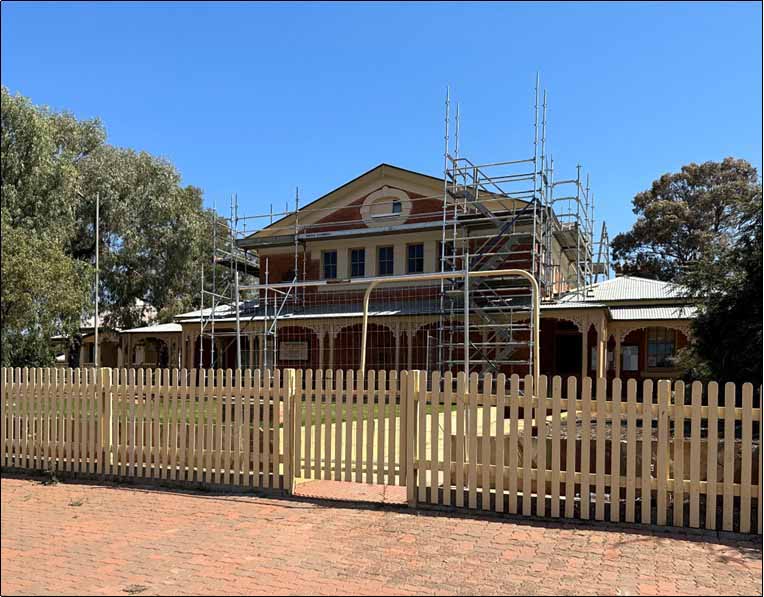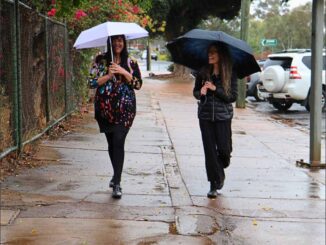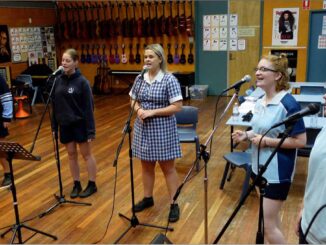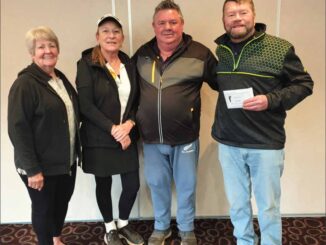
The Cobar Courthouse, one of Cobar’s magnificent old buildings, is currently undergoing a refurbishment.
According to a Department of Communities and Justice spokesperson, the maintenance project includes internal and external painting and associated repairs to woodwork, window and door frames, walls and eaves.
The carpet is also to be replaced.
The building work is being carried out by Ben Knight Constructions.
“The works are progressing well and are expected to be finished by mid-October.
“No disruption to normal service delivery at the courthouse is expected while the works are ongoing,” the spokesperson said.
Kay Stingemore, curator of the Great Cobar Museum, advises the construction of the Cobar Courthouse began in September 1885 and was completed by May 1887.
“Before this, according to The Town and Country Journal 28 February 1880, Cobar could not “boast of one proper government building”.
“The Sydney Morning Herald of 10 March 1881 stated that Cobar’s court was held “in a very queer place indeed”, an “ordinary wooden cottage”.
“The small room in which hearings were held was reported to be most uncomfortably close,” Mrs Stingemore said.
“Finally, after years of requests and complaints, a proper Courthouse was planned in the gazetted part of town.
“The construction of government buildings was seen as an important step in establishing Cobar as a permanent town and not just the ephemeral site of shanty villages that sprang up in private townships beside the mines,” she said.
“Colonial Architect James Johnstone Barnet designed the Courthouse, one of 130 courthouses he oversaw in NSW during his career.
“The builder was Hugh Sutherland, who was also responsible for many of Cobar’s other public buildings.”
Local-fired bricks made with lime from The Rookery station were used in the construction.
“At the official opening on May 3rd 1887, The Sydney Morning Herald reported WJ Hogan describing the Courthouse as a “commodious and faithfully-built edifice, admittedly an ornament to the town”.
“It was first used on May 11 1887 and has been in continuous use ever since.
“Today, the Courthouse is recognised as an important building, in good condition and preserving a high degree of integrity,” Mrs Stingemore said.
“It forms part of a continuous streetscape of attractive and historically significant buildings along the western side of Barton Street.”
An early photograph on display at the Great Cobar Museum shows the interior of the Courthouse with its fine cedar furnishings created by George Grill.


